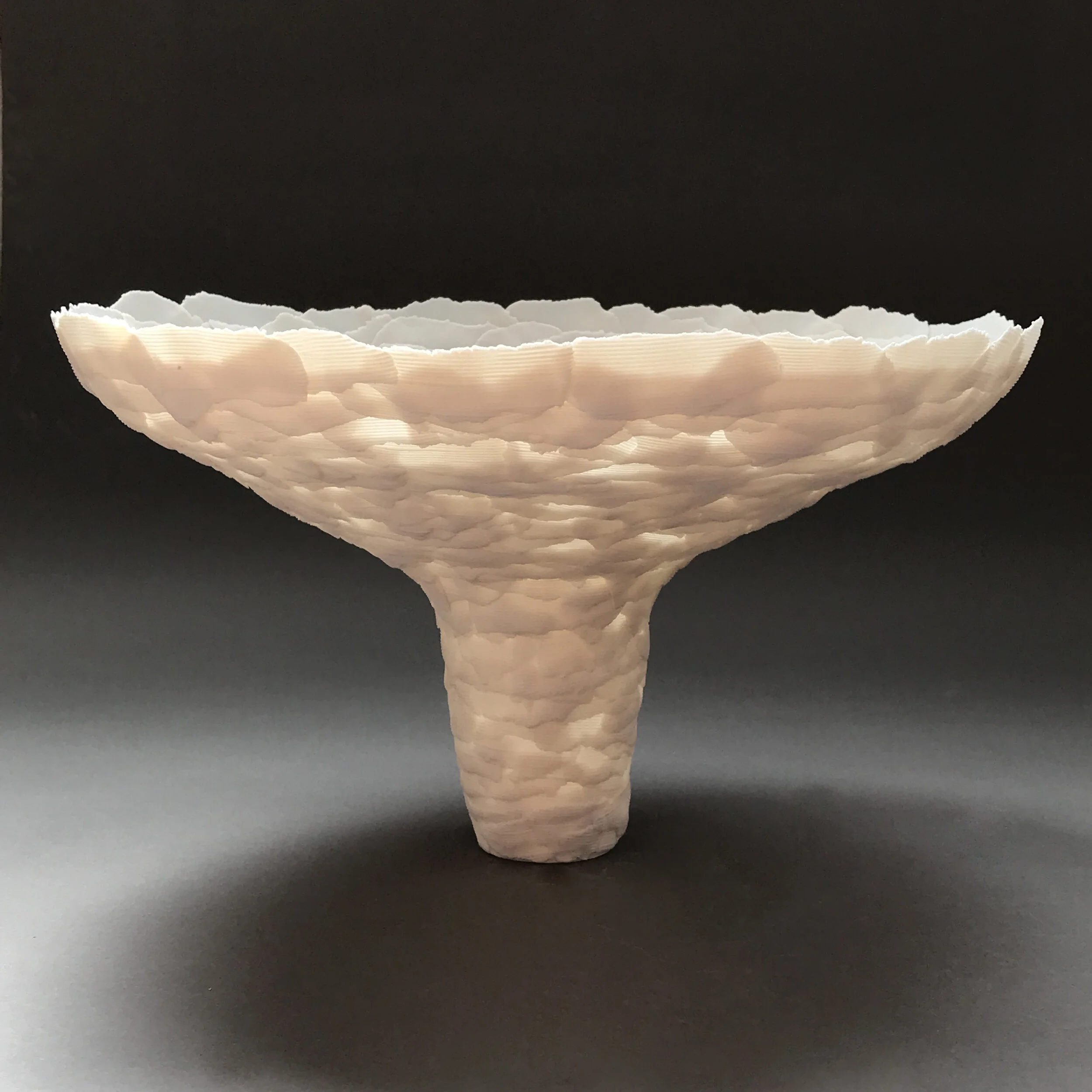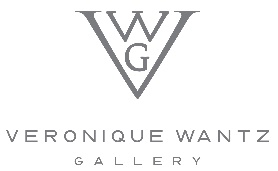Who is, or has been, the biggest influence on your art?
I draw from a pretty wide and eclectic swathe of inspiration. I spent several years helping artisans in remote parts of the world find new markets for their work. In that job, I was exposed to craftspeople engaged in every conceivable medium, making extraordinary things. I think their collective influence informs my own work. I love all kinds of basketry. And I am also drawn to textiles — especially ikats, Japanese boros and just about anything that involves piecework or patching.
People see a lot of Rudolph Staffel in my work, and I am crazy about his ceramics. But I only learned about him after people started repeatedly mentioning him to me. I was fortunate to see a show of his work at the Philadelphia Museum of Art, and I was like: yep, I get it.
I also really love British ceramicist Mary Rogers. I have a book by her on my nightstand. And I admire Shozo Michikawa and Fujikasa Satoko, both of whom beautifully capture movement in their work.
But more often than not, I am looking to artists in other mediums who are probing themes that interest me, like Tara Donovan and Rowan Mersh, who create amazing works through additive, repetitive processes.
I think one take-away from my work with artisans is that the best tools really are your hands. I eschew complicated techniques and equipment. The simpler and more elegant the process, the more I cotton to it.
How long have you been working with your medium?
30+ years
What is your creative process like?
I tend to be very outcome driven, so I have to be equally purposeful in embracing process (slightly oxymoronic, I realize). At least once a month, I take a 25-pound bag of porcelain, and I give myself as much time as I need or want to make my way through it, with no expectations whatsoever re finished work. Ninety percent of what I make gets recycled. But from that remaining ten percent, the kernels of new ideas are often generated. A lot of my work is a conversation with the material: I have an idea in my head, but then as part of executing it, I encounter something unexpected — and way more interesting — which takes me in an entirely new direction. The accidental becomes intentional, and the intentional leads to unexpected discovery. I am always working that virtuous circle. I try to be alert and open to surprises.
Also, for me, creativity comes through constraints. I have purposely limited myself to working only in porcelain, using little or no glaze. I get overwhelmed by a lot of options, which shuts me down creatively. I like going deep and wide with a single material, really probing and pushing what it can do.
What are the most important factors you consider when you create your sculptures?
Honestly, my best work often occurs when I think less.
How has your practice changed over time?
After years of working in shared or communal studios, I bought and renovated a small commercial condo in a converted 19th century glass factory in Old City Philadelphia. It is truly a room of my own — 350 square feet of beautiful, light-filled space. Having my own studio allows me to embrace my own rhythms, rather than accommodating others. I can return to my work exactly as I left it. I don’t get interrupted, unless I truly want to take a break. Solitude and control over my environment allowed me to make a quantum leap in my practice.
What part of creating art brings you the most enjoyment?
Discovering something new — that moment of epiphany — is a total endorphin rush. It is a very addictive feeling — you just want more and more of it. And that is what keeps me working.
What do you think is the most difficult aspect of making your sculptures? Why?
Porcelain is like a siren song. It lures you in with its whiteness and smoothness. It is a beautifully tactile material. But it is also famously temperamental and difficult to work with. I have a very high loss rate — meaning a lot of my pieces never make it to the final stage due to cracking and collapsing, either
before they are loaded into the kiln or during the firing itself, where temperatures exceed 2200 degrees Fahrenheit. So, you have to make your peace with loss and recognize that a certain amount of the process is out of your control, while also honing and refining all that is within your control. They don’t call it “mastering” a craft for nothing.
Which of your works is your personal favorite, and why?
The pieces that represent “a-ha” moments are always my favorites. They often become the departure point for new series. But there is nothing like that first one.
Of all your travels, which city or place inspires you the most and why?
I love to explore new places and a lot of my travel has been focused on countries that have rich art and craft heritages - India, South Africa, Guatemala. It’s rare that a place fails to inspire me in some way. Japan had always been on my bucket list, and I was fortunate to get there finally a couple years ago. It did not disappoint. Artistry and attention to detail are seamlessly woven into everyday life — from the way food is presented to how a package gets wrapped. I would go back in a heartbeat—there is so much I want to see and do there.
What is something quirky or unexpected about you that most people don’t know?
I have 52,792 photos — and counting — on my iPhone. I am obsessed with taking photos. I am a huge walker and explorer of nooks and crannies, so a lot of the picture-taking occurs while I wander. Some of this imagery eventually wends its way into my work. I often only realize it after the fact. Whether I am taking pictures or admiring a work of art, I find myself drawn to the same themes: movement, textured surfaces, light and shadow. I take some heart in that consistency. I don’t know the “why” of it. I just let the forces of attraction exert their gravitational pull, which, if I think about it, is the same reason I make things.





